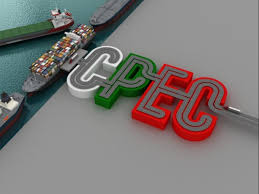Mr Kumar
ISLAMABAD – China-Pakistan Economic Corridor (CPEC) is a multi-faceted development initiative that provides Pakistan with a once-in-a-lifetime chance for fair and sustainable growth.
This initiative has helped Pakistan achieve socioeconomic development and improve the living standards of its people.
According to the latest updates, six completed and 11 under-construction projects under CPEC have aided the country in creating jobs, fostering socioeconomic advantages for residents, and pulling the underprivileged out of poverty.
Now, this project has entered the second phase following the successful completion of the first, which has filled gaps in energy and communication infrastructure with the pace of development on the projects.
The second phase will have a much larger impact than the first, with the establishment of Special Economic Zones (SEZs) connecting the private sectors of Pakistan and China, bringing in more private investment, boosting cooperation in agriculture, science and technology, and also ushering in an era of industrialization.
Currently, there are four SEZs named Rashakai SEZ, Dhabeji SEZ, Allama Iqbal Industrial City and Boston SEZ which are in the construction phase, and the remaining four projects are in the pipeline.
The role of these SEZs is very important, as they will help strengthen the economy and provide millions of jobs and business opportunities to the people by reducing poverty and unemployment and improving the living standard.
The amount of aggregate trade between China and Pakistan is increasing day by day, with the last 10 months indicating a 10 percent rise over the previous year’s equivalent period. In future, this project will increase bilateral trade by several billion dollars.
According to the most recent statistics, Pakistan’s exports to China increased by over 70% in the first quarter of 2021. The exports to China totaled $888 million in the first quarter of 2021 compared with $526 million in the first quarter of 2020 (PBS).
The current circumstances indicate that Pakistani goods’ exports to China and neighbouring countries are steadily rising, and with the development of CPEC, these prospects will strengthen and improve the economy of Pakistan. Furthermore, the key Gwadar port in Pakistan, whose projected cost is between $10,000 million and $14,000 million, is being connected to the rest of the country through an improved road infrastructure, which will boost the economy and improve regional connectivity and trade.
CPEC is an infrastructure and development initiative that would provide thousands of local residents with job and business opportunities, increasing their income. Furthermore, this initiative will facilitate access to essential living necessities like banking, markets, transportation, education, and health care besides providing access to education and health services in many rural and remote areas.
CPEC, in its early stages, has created 38,000 jobs, benefiting 75 percent of Pakistani nationals. The project is anticipated to create 196,827 jobs not only in Pakistan, but also throughout the region on its completion. It would also generate possibilities in the neighbouring nations by engaging in a variety of trade and commercial activities in the area eradicating poverty and improving the living standards of Pakistanis.
CPEC is a 2,700-kilometer-long road, railway, and gas-and-oil pipeline that connects China and Pakistan. This link will replace China’s existing long (12,500km) shipping route, saving the country time and billions of dollars in shipping costs while also providing a fast and safe path for trade with the rest of the globe.
The multilateral projects under CPEC will usher in socio-economic development across the distant and rural area of Pakistan improving the living standard of people there, either directly or indirectly. That’s why CPEC has been dubbed “Pakistan’s fate changer.”






